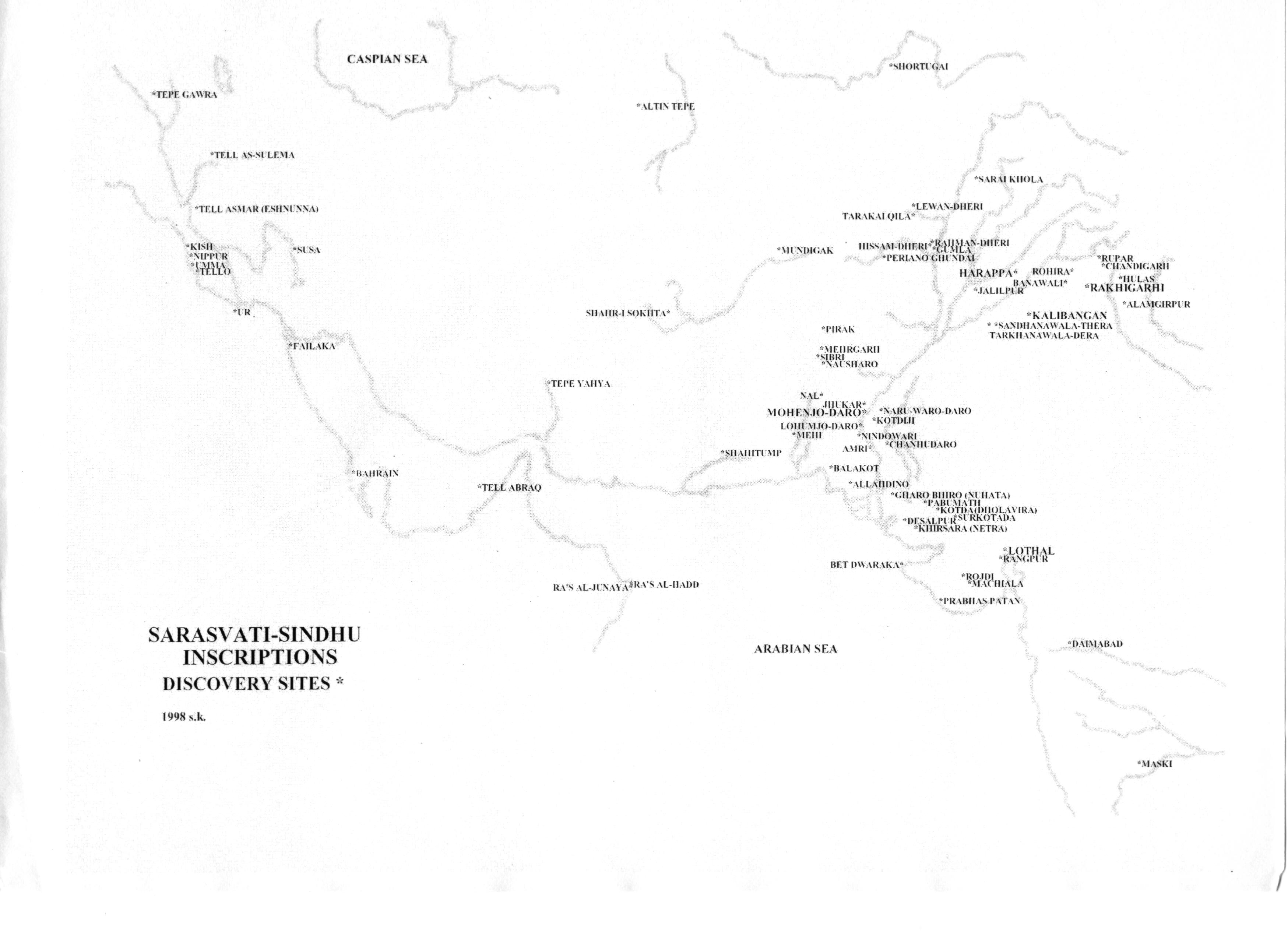Mirror: https://www.academia.edu/8798040/Indus_script_--_a_contribution_of_artisans_of_Ancient_India_to_the_Bronze_Age
This note catalogues reasons why Indus script constitutes a documented contribution of artisans of Ancient India to the evolution of Bronze Age along the Tin Road, a precursor of the Silk Road.
This note catalogues reasons why Indus script constitutes a documented contribution of artisans of Ancient India to the evolution of Bronze Age along the Tin Road, a precursor of the Silk Road.
Image may be NSFW.
Clik here to view. While Indus script inscriptions of Sarasvati-Sindhu civilization, from 45 sites, have been catalogued in corpora, many Indus script hieroglyphs are also evidenced from archaeological sites along the Persian gulf (so-called Dilmun seals), from sites of Elam, Mesopotamia of Ancient Near East and also from two tin ingots discovered with Indus script inscriptions from a shipwreck in Haifa, Israel.
While Indus script inscriptions of Sarasvati-Sindhu civilization, from 45 sites, have been catalogued in corpora, many Indus script hieroglyphs are also evidenced from archaeological sites along the Persian gulf (so-called Dilmun seals), from sites of Elam, Mesopotamia of Ancient Near East and also from two tin ingots discovered with Indus script inscriptions from a shipwreck in Haifa, Israel.
Clik here to view.
 While Indus script inscriptions of Sarasvati-Sindhu civilization, from 45 sites, have been catalogued in corpora, many Indus script hieroglyphs are also evidenced from archaeological sites along the Persian gulf (so-called Dilmun seals), from sites of Elam, Mesopotamia of Ancient Near East and also from two tin ingots discovered with Indus script inscriptions from a shipwreck in Haifa, Israel.
While Indus script inscriptions of Sarasvati-Sindhu civilization, from 45 sites, have been catalogued in corpora, many Indus script hieroglyphs are also evidenced from archaeological sites along the Persian gulf (so-called Dilmun seals), from sites of Elam, Mesopotamia of Ancient Near East and also from two tin ingots discovered with Indus script inscriptions from a shipwreck in Haifa, Israel.Indus Script provides evidence of metal work done by artisans of ancient India.
Image may be NSFW.
Clik here to view.
Clik here to view.

Such expansive use of Meluhha hieroglyphs of Indus Script identify the interaction areas of the civilization during the Bronze Age by traders and artisans from Meluhha (Ancient India).
A remarkable feature of the underlying glosses which enable rebus readings of the hieroglyphs is that the glosses not restricted to any one language of Ancient India but evidences the region as a linguistic area (sprachbund) which evolved into the Munda, Indo-Aryan, Dravidian language streams.
The Indus script is also named in an ancient text of Vatsyayana as mlecchita vikalpa (Meluhha cipher). The script thus, provides a valuable resource to identify the present-day speakers, bharatiya, in this sprachbund as legatees of the civilization.
Since the entire corpora of Indus script inscriptions and continued use of Meluhha hieroglyphs in an extended region and during the historical periods also in Ancient India, are catalogues providing technical specifications of metalwork, the bharatiyo were metal casters. It is not mere coincidence that the gloss bharatiyo in Gujarati means 'metal casters'.
Papers presenting an overview of the decipherment complement the readings of nearly 3,200 inscriptions detailed in Indus Script -- Meluhha metalwork hieroglyphs:
India, that is Bharat. Tracing republic roots in Sarasvati- Sindhu civilization and Indus Scriptmore
Bharat, name of a nation. Root: bharatiyo 'caster of metals', bharat 'metal alloy' in Indus Script more
Catalogs of pola, kuṇṭha, goṭa, bichi ferrous oxide metalwork in Meluhha Indus script hieroglyphs more
Catalogs of pola, kuṇṭha, goṭa, bichi ferrous oxide metalwork in Meluhha Indus script hieroglyphs more
ayas Vedic gloss in hieroglyph modifiers of Indus script, indicators of semantics of soma as a metallurgical processmore
Indus writing mlecchita vikalpa (Meluhha cipher)—6. Meluhha metallurgy, Tin Road trade & interaction narrativesmore
Indus writing mlecchita vikalpa (Meluhha cipher)—7. Interaction areas & Hermeneutics from Sarasvati-Sindhu (Hindu) civilizationmore
Indus wri$ng mlecchita vikalpa (Meluhha cipher)—4. kol 'alloy of 5 metals' pañcaloha in Meluhha hieroglyphsmore
Indus writing mlecchita vikalpa (Meluhha cipher)—2-- Semantics & orthography of svastika hieroglyphmore
Indus writing mlecchita vikalpa (Meluhha cipher)--1- Adoration of pattaṇī ʻferrymanʼ, paṭṭaṟai ‘guild’, kole.l ‘smithy, temple’more
Meluhha hieroglyphs & cuneiform writing systems on two soft-stone fragments of Ancient Near East (3rd millennium BCE)more
Locating Aratta of Ancient Near East using Meluhha hieroglyphs and defining Anzu & the start of Tin Road from Meluhhamore
Tin Road: Meluhha (Aratta) - Assur – Kanesh. What was traded and documented in writing in Bronze Age?more